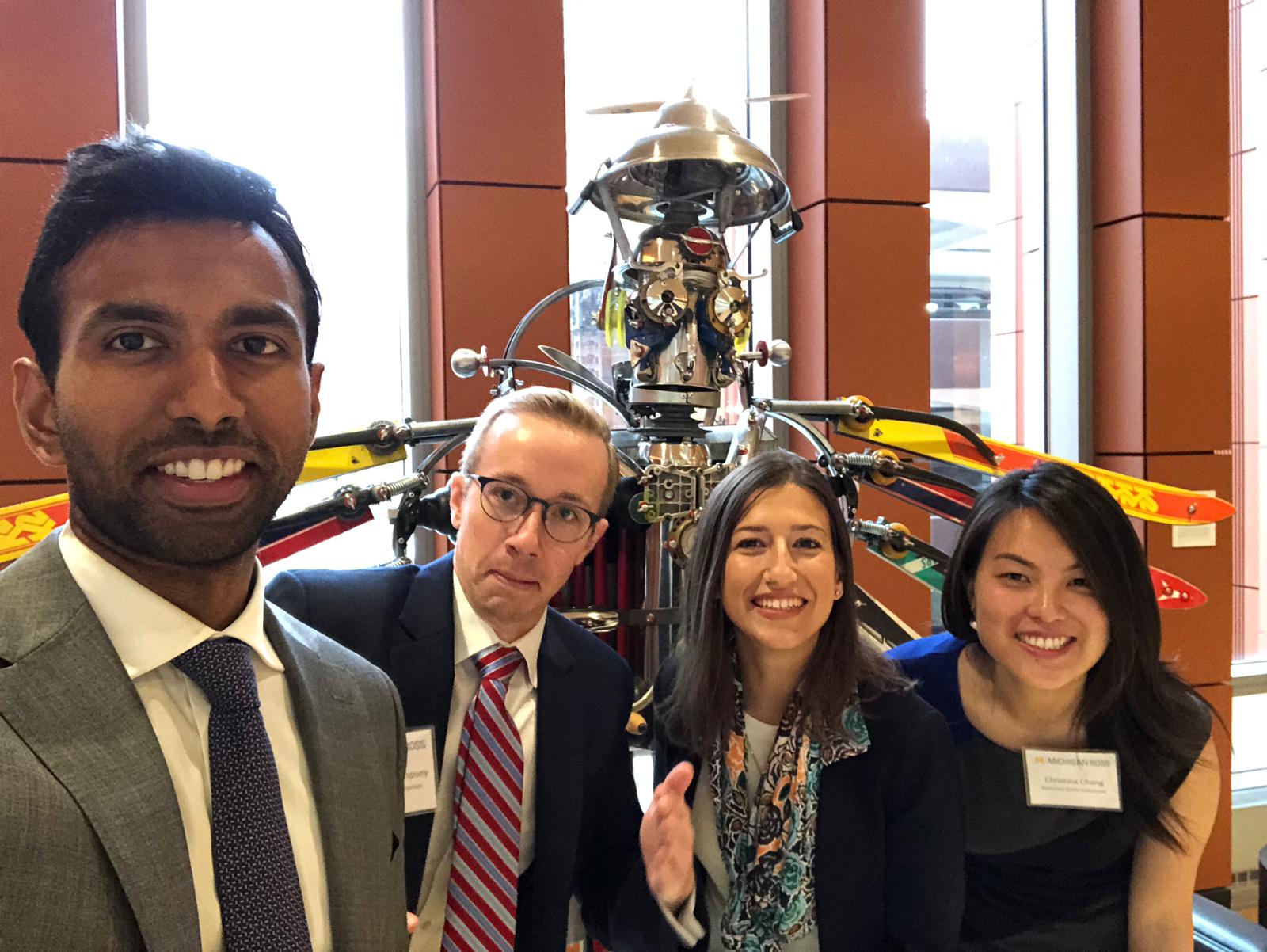
The Case for Electrifying California’s Cars
Last semester, a team of Wharton MBA students competed in the University of Michigan Renewable Energy Case Competition where they made the case for electrifying California's auto fleet.
Last semester, a team of Wharton MBA students with wide-ranging experiences competed in the University of Michigan Renewable Energy Case Competition.
The key question of the competition was how to help California achieve its recently passed goal to run its economy on 100% renewable energy by 2045. In the case, the team was given the ability invest $100 million as a growth equity investor into many different types of sustainable opportunities. These included energy storage, energy startups, new technologies, and other endeavors. Moreover, the case noted that the money was coming from a group of California utilities, so the chosen technology would need to support the goals of these organizations.
The team decided to focus on electric vehicles as a key opportunity for the state. California has 35 million cars, the most out of any state in the U.S. However, rather than investing in an electric vehicle manufacturer, the students wanted to focus on infrastructure.
At the Wharton Energy Conference, ChargePoint sent a representative to talk about some of the work the company was doing in developing charging stations around the United States. This discussion inspired the team to consider an investment in Chargepoint of $100 million at a $1 billion valuation.
The team saw the key market benefits of building additional vehicle charging stations. The charging station infrastructure and vehicle to grid energy sale market is attractive due to the intrinsic growth of electric vehicles, the increases need for changing points, and the vehicle to grid potential to provide critical energy storage. The team focused on these four key points:
- Electric vehicles: the EV market is predicted in California is predicted to grow1 at a rate of 25% per year.
- Charging stations: Charge point has had great success in 7 years and the unit growth for stations is forecasted for 21% per year1
- Providing cheap power to the grid: EV peak charging times are not congruent with energy consumption peaks, therefore EVs can sell power back to the grid at high price times. This generates money for EV owners.
- Providing storage for intermittent generation: Electrification of the car fleet allows up to 50% storage2 support of both intermittent generation and growing peak load.
Not only does ChargePoint have a sustainable business model today, but it will also benefit from vehicle to grid technology. Currently, the charging stations can receive power as well as emit it. Therefore, an owner of an electric vehicle can make about $1,000 per year charging at night when power is cheap, and selling this excess power back to the grid during the day at a higher rate. During the summer, power during the day is about five times as expensive as it is at night.

On the other hand, in order to go 100% renewable, California will have to invest in a lot of solar power. Vehicle to grid systems can then be repurposed. They can store the excess renewable power generated during the day (generally solar), and push it back into the grid at night when intermittent energy is not being generated. This removes the need to build a full grid’s worth of utility-scale lithium-ion battery installations, potentially saving hundreds of millions of dollars.
The team presented information showing that the market for both ChargePoint’s infrastructure and software to manage this electric vehicle infrastructure only grows more attractive over time as the batteries begin to provide cheaper storage to California’s grid and can support a massive share of the total peak load. If California’s fleet size stays stagnant, an electrification rate of just 10% would result in peak load support of up to 50% the current grid peak load of 50GW.
The Wharton team sincerely hopes that these ideas can contribute to the sustainable energy future of California and other parts of the world.
Do you have an energy idea you want funded? Learn more about our student grants that make opportunities like this possible.
1. California Energy Commission, Plug-in Electric Vehicle Infrastructure Projections. Report as of March 2018
2. California Planning Commission, “Demonstrating Plug-in Electric Vehicles Smart Charging and Storage Supporting the Grid,” August 2018
The Wharton team was represented by: Giridhar Sankar, Laura Krivec, Christina Chang, and Alexander Dempsey.
Giridhar Sankar
The Wharton SchoolGiridhar Sankar is a MBA/MA Candidate at The Wharton School. He received Kleinman Center funding to participate in the University of Michigan Renewable Energy Case Competition.

